Roboadvisors and automated investment platforms are also particularly vulnerable targets for scammers and identity thieves, who can exploit their systems to carry out fraudulent activities and steal sensitive information.
No One Left Behind: Challenges for full inclusion in digital banking

Banking has undergone a radical transformation, largely migrating to online platforms and enabling the emergence of entities like neobanks. While this has brought greater convenience and accessibility for many, it has also highlighted the need for full digital inclusion, especially for vulnerable groups.
Who do we refer to when we talk about vulnerable groups?
A
t first glance, digital banking is designed for everyone, but if it’s not built with a humanistic approach, it will become a hostile environment for many. That’s why banks of all sizes can rely on TrustCloud to adopt solutions that reinforce their services from an innovative yet approachable perspective. That’s the real revolution: empowering people through simple and compassionate technology. The digital gap in banking is particularly deep for:
- Elderly individuals: Many seniors are not familiar with digital technologies or struggle to use them. Lack of access to computers, the internet, and digital skills limits their access to online banking services.
- Individuals with limited digital education: Those with limited technology education may find it challenging to navigate online banking platforms or apps and conduct transactions. Lack of confidence and difficulty in understanding financial terminology are also significant barriers that could be addressed with solutions that streamline processes, such as identifications supported by expert personnel.
- Individuals living in rural or remote areas: Rural areas may have limited access to high-speed internet or lack infrastructure, making both digital and traditional banking usage difficult.
- Individuals with disabilities: Physical and cognitive barriers can limit access and use of online banking platforms. Lack of tools and technologies adapted to the specific needs of each disability is a significant obstacle.
- Other groups: Ethnic minorities, individuals with low incomes, immigrants, or those with learning difficulties may also face challenges in digital banking inclusion.
No One Left Behind challenges
It’s essential for online banking platforms to be accessible to everyone, regardless of their abilities or limitations. Universal designs that consider aspects such as interface clarity, use of plain language, compatibility with assistive technologies, and adaptation to different screen sizes are necessary.
Additionally, tailored training and education programs are needed to address the specific needs of each vulnerable group so they can develop the digital and financial skills necessary to navigate the online banking environment.
The expansion of high-speed internet connectivity, especially in rural areas, is crucial to ensuring that everyone has access to digital banking. This factor will only make sense if banks take a proactive role in promoting digital inclusion, developing accessible products and services, providing adequate technical support, and establishing partnerships with committed providers.
Another significant challenge is ensuring that digital banking is culturally sensitive and respectful of the diversity of its users. Cultural differences can influence usage preferences and service expectations. It’s essential for financial institutions to recognize and respect these differences when designing and offering their digital services, avoiding algorithmic biases and ensuring that technologies are neutral and do not exacerbate inequalities.
Ultimately, governments and authorities have a duty to enact policies that promote digital inclusion in banking, supporting initiatives for education, training, and development of accessible technologies.
An inclusive future in banking
Achieving full inclusion in digital banking is not only a moral imperative but also an opportunity to improve the quality of life for millions of people.
TrustCloud is committed to addressing the challenges of inclusion in digital banking comprehensively. With a user-centered approach, our solutions for banking onboarding are designed to ensure that all people, regardless of age, level of technological skill, or ability, can access financial services securely and without barriers.
Our platform offers an adaptable video identification experience, which can be assisted by fraud specialists or automated according to user preferences and needs. In any case, the VideoID mode transfer functionality converts an unassisted video identification into an assisted one or vice versa in just an instant, facilitating access and issue resolution.
Additionally, our integrated chat translates conversations in real-time into over 30 languages, and we have a team trained in sign language to ensure accessibility for people with hearing disabilities. Our instructions are always simple, visual, and intuitive, and we are committed to always respecting the privacy of everyone, with total transparency.
The No One Left Behind project drives us to reimagine technology to improve processes in every digital transaction, without neglecting security and respect for privacy.
With TrustCloud, we are leading the way towards a truly inclusive and accessible digital banking for No One Left Behind.
Learn more about our initiative here.
Contact the TrustCloud team and be part of the change

























